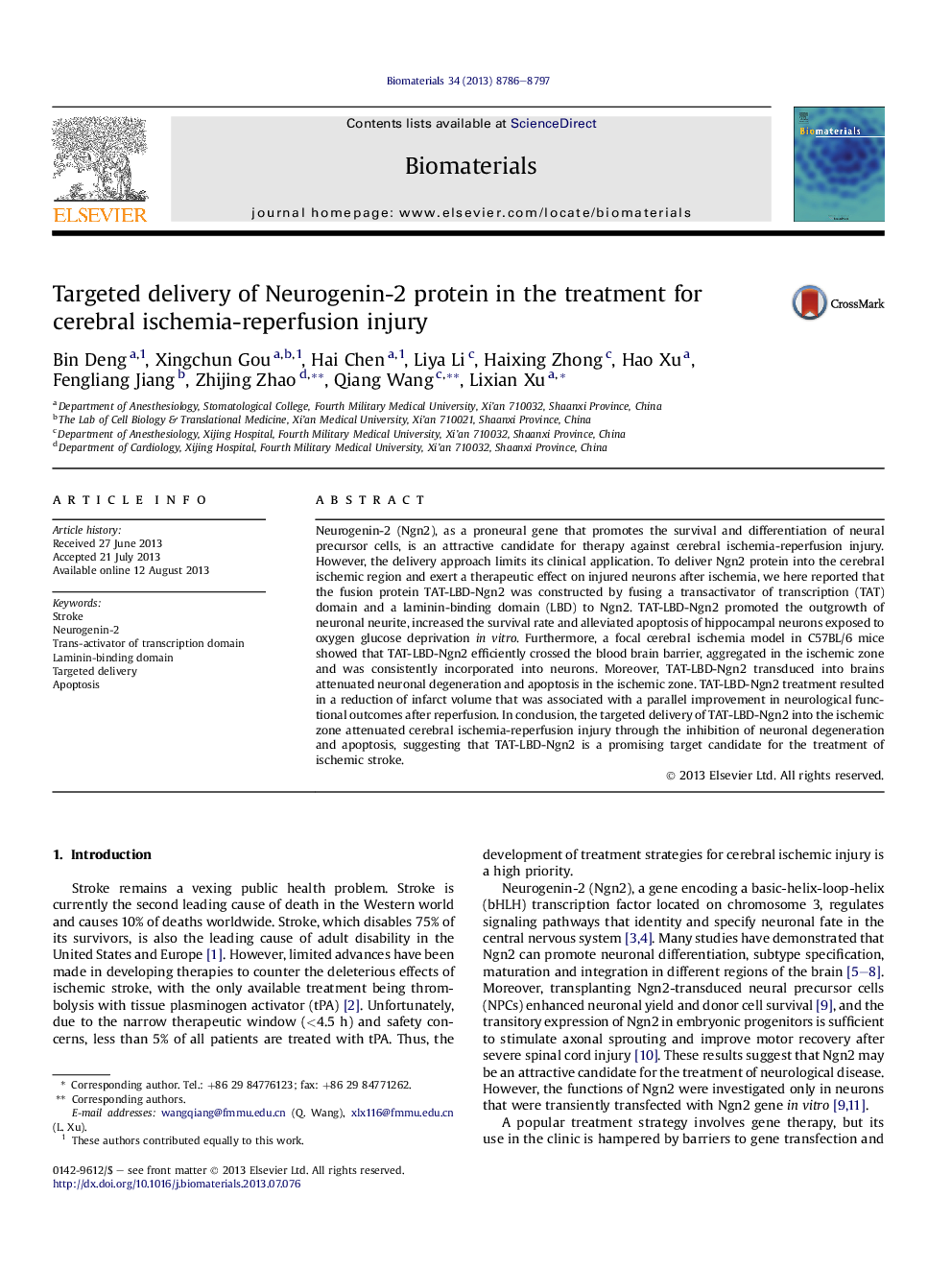| Article ID | Journal | Published Year | Pages | File Type |
|---|---|---|---|---|
| 10228011 | Biomaterials | 2013 | 12 Pages |
Abstract
Neurogenin-2 (Ngn2), as a proneural gene that promotes the survival and differentiation of neural precursor cells, is an attractive candidate for therapy against cerebral ischemia-reperfusion injury. However, the delivery approach limits its clinical application. To deliver Ngn2 protein into the cerebral ischemic region and exert a therapeutic effect on injured neurons after ischemia, we here reported that the fusion protein TAT-LBD-Ngn2 was constructed by fusing a transactivator of transcription (TAT) domain and a laminin-binding domain (LBD) to Ngn2. TAT-LBD-Ngn2 promoted the outgrowth of neuronal neurite, increased the survival rate and alleviated apoptosis of hippocampal neurons exposed to oxygen glucose deprivation in vitro. Furthermore, a focal cerebral ischemia model in C57BL/6 mice showed that TAT-LBD-Ngn2 efficiently crossed the blood brain barrier, aggregated in the ischemic zone and was consistently incorporated into neurons. Moreover, TAT-LBD-Ngn2 transduced into brains attenuated neuronal degeneration and apoptosis in the ischemic zone. TAT-LBD-Ngn2 treatment resulted in a reduction of infarct volume that was associated with a parallel improvement in neurological functional outcomes after reperfusion. In conclusion, the targeted delivery of TAT-LBD-Ngn2 into the ischemic zone attenuated cerebral ischemia-reperfusion injury through the inhibition of neuronal degeneration and apoptosis, suggesting that TAT-LBD-Ngn2 is a promising target candidate for the treatment of ischemic stroke.
Related Topics
Physical Sciences and Engineering
Chemical Engineering
Bioengineering
Authors
Bin Deng, Xingchun Gou, Hai Chen, Liya Li, Haixing Zhong, Hao Xu, Fengliang Jiang, Zhijing Zhao, Qiang Wang, Lixian Xu,
